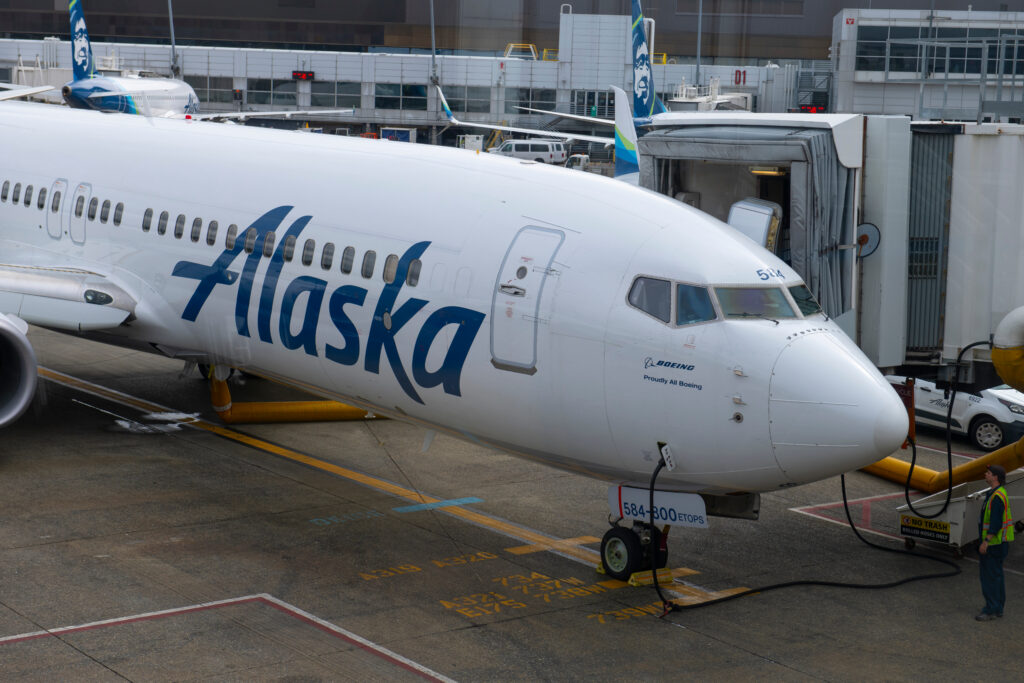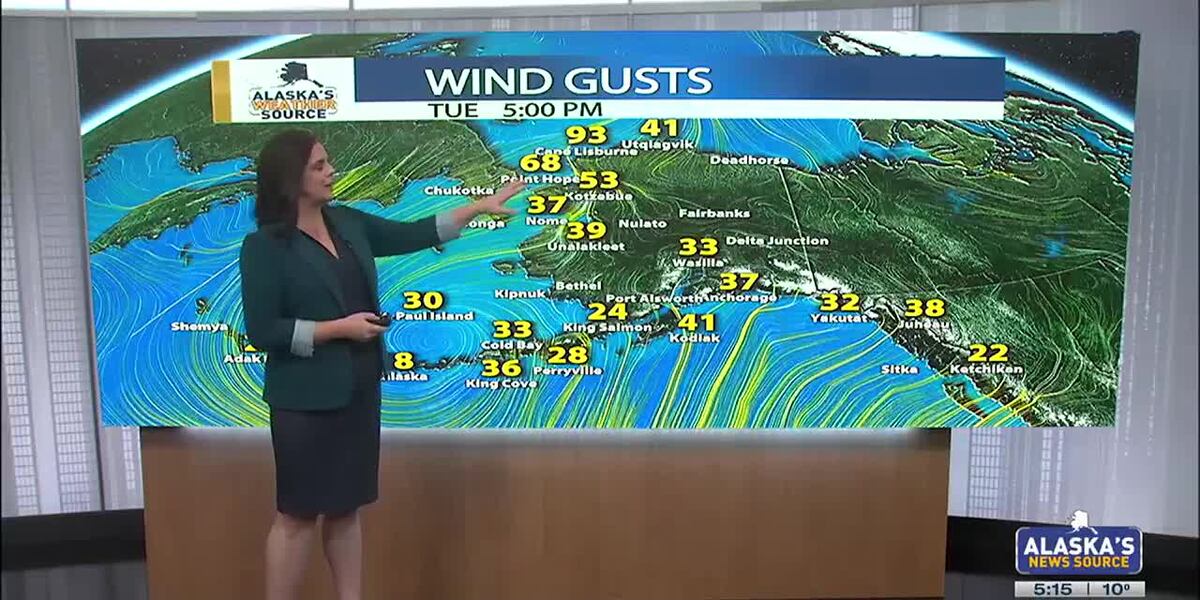Facebook raffles have grown in popularity in rural Alaska since the COVID-19 pandemic, but they remain illegal when they’re hosted without a permit — a practice that puts raffle organizers and participants at risk.
The Alaska State Troopers and the state Department of Revenue investigate dozens of illegal gaming reports each year, troopers spokesman Austin McDaniel said. Whether it involves bingo, pull tabs or raffles, hosted online or in-person, gambling without a permit is against the law in Alaska.
For hosts, illegal online raffles are sometimes a way to get additional income, and for participants, it can be a chance to win money, appliances or even vehicles, so hard to get in rural areas.
“It’s expensive right now to live — people are trying to hustle to make more dollars,” especially in remote areas, said James Dommek Jr., marketing coordinator for the Arctic Slope Community Foundation who was born and raised in Kotzebue.
One Utqiagvik resident, who asked to remain anonymous for this story, said they took part in several illegal online raffles because of the chance to win a vehicle — a prize that’s especially practical and difficult to purchase in the off-the-road communities.
The resident said they started seeing online raffles during the COVID-19 pandemic when bingo parlors and pull-tab establishments were shut down, and residents had to stay at home without anything to do, they said.
That experience isn’t unique: The popularity of illegal gambling online grew during the pandemic, said Patuk Glenn, the ASCF executive director and a media influencer originally from Utqiagvik.
Several years later, illegal raffles are still held on social media, often by and for rural Alaska residents, many of whom don’t know these activities are against the law, Dommek said.
While some hosts conduct raffles for profit, others turn to the activity in time of need — to buy a plane ticket to Anchorage to see a doctor, to pay for repairs after their house burns down, and to cover funeral expenses when they lose a loved one, Dommek said. People seeing raffles with such causes often “don’t think twice” and participate, he said.
“There’s a culture of giving that we naturally have,” Glenn said. “When we do see things like medical fundraisers or funerary fundraisers, even though we know that person doesn’t have a gaming license, a lot of times, it just pulls on our hearts and we support these things. … But where is the line of where it’s bad and illegal and wrong, right?”
The risk of illegal online raffles
Regardless of the cause for holding a raffle, without a permit, hosts and participants are at risk of getting a fine or even a prison sentence. A violation for a first-time offender participating in a gambling activity is punishable by a fine of up to $1,000 while promoting gambling in the first degree is a Class C felony punishable by up to five years in prison and a $50,000 fine.
In October, the state brought felony charges of promoting gambling against six administrators of a Facebook group — several from Point Hope — who regularly hosted illegal raffles for electronics, household items, snowmachines and vehicles, according to the charging documents. The group, known originally as 907 Prizes and Gifts and later renamed to Hakuna Matata, had more than 8,000 members and from 2020 to 2023 appeared to be the largest illegal gambling group in Alaska, charges said.
Hakuna Matata administrators started posting raffles as early as in 2020, and the Department of Revenue reached out to one of them with a warning, charges said. The administrator attempted to get a gaming permit but learned that the Facebook group was not eligible for one, charges said: Only nonprofit organizations, municipalities and tribes can get a charitable gaming permit.
Instead of halting illegal raffles, the administrators made the group private, said that raffles were for entertainment and not for gambling, and encouraged participants to call prizes “gifts” and tickets “donations,” charges said.
The raffles that administrators and other group members hosted often had expensive tickets and prizes. In one raffle, the drawing required a $270 ticket and prizes included a 2021 Chevrolet Silverado, charges said.
The raffles were expected to operate at 20%-25% profit, charges said. As an example, in November 2020, money transferred to the account of one of the administrators totaled nearly $100,000, charges said.
In September, several group administrators were found guilty and were put on probation for three years, according to the judgment in the case files. Other cases were still open.
The news about the group of administrators being charged spread quickly across the communities, online and in person, with people expressing surprise and dismay about it.
Since then, many of the Facebook groups hosting illegal raffles disbanded, said the Utqiagvik resident who had participated in such raffles. They wondered if large unlicensed raffles would prompt additional felony charges in the future.
Gambling legally
While most gambling activities are prohibited in Alaska, there is one exception: charitable gaming that is conducted by nonprofit and charitable organizations, municipalities, school districts and federally recognized tribes that have a permit from the Department of Revenue. The proceeds from these activities have to go to prizes to participants and to political, educational, civic, public, charitable, patriotic or religious uses in the state, said Aimee Bushnell, liaison and spokeswoman at the department.
Online raffles were first temporarily legalized during the pandemic and in June 2022 became legal permanently, Bushnell said.
In 2023, the department issued over 1,240 gaming permits, the majority of them to charitable, service and education organizations in urban areas such as Anchorage, Fairbanks, Juneau and Wasilla, according to the Department of Revenue’s Charitable Gaming Annual Report.
In Utqiagvik, organizations that have gaming permits include Barrow Volunteer Search and Rescue, the Alaska Eskimo Whaling Commission, Inupiat Community of the Arctic Slope and Arctic Education Foundation, said Utqiagvik City Mayor Asisaun Toovak
The City of Utqiagvik is also among the permit holders and hosts in-person bingo and pull tabs to raise money for the city’s scholarship fund, Toovak said.
“This past fall we funded 24 full-time college students at $1,300 for the semester,” Toovak said.
Arctic Slope Community Foundation also has a gaming permit and hosts a yearly fundraising event, Casino Night, as well as monthly online raffles, Dommek said. The proceeds from those raffles go to protect food security in the North Slope region.
“We support the food banks. We don’t want any Elders going hungry. We don’t want any children going hungry. We don’t want people who are in need going hungry,” Dommek said. “We definitely affect thousands of lives every month when these food donations get distributed.”
The foundation has spent over $400,000 this year providing funds to village food banks, supporting whaling captains, repairing freezers, purchasing hunting supplies, funding traditional food workshops, as well as search and rescue programs that ensure the safety of hunters, Glenn said.
The foundation has been holding online raffles for several years now, but this year the success has been different, Dommek said.
“It’s an election year. The economy is very slow. Inflation is through the roof. Groceries are expensive, everything is expensive, and there are also a lot of illegal online raffles,” he said.
Downsides and draws of illegal online gambling
When residents engage in illegal raffles, they might inadvertently pull the funds away from organizations conducting raffles legally and fundraising for charitable causes.
“If the illegal (raffles) were shut down, those people who want to … participate in these kinds of things, they would have no other choice but to go through the legal routes,” Dommek explained.
Many residents often choose the illegal raffles, in part because they allow them to win prizes right away, without the wait that often comes with legal raffles, he said.
When raffles are held illegally, Glenn said, hosts don’t need to report on those activities to maintain a gaming permit, and there is a chance that they might not handle participants’ money properly.
“If it’s illegal, it’s like the Wild West, and people can do anything,” Glenn said. “People are profiting and taking advantage of people — especially those that probably have gambling addiction.
Glenn links the popularity of gambling in Indigenous cultures to traditional competitive activities with incentives, like Native games.
“It is a cultural thing,” Glenn said. “Gaming is not something that’s brand new to us.”
Gaming — specifically, casinos operated and regulated by tribes in the Lower 48 — is sometimes linked to an economic benefit and improved quality of life in Indigenous communities. In Alaska, the Native Village of Eklutna is pursuing a plan to build a casino in Birchwood, which would be the first such facility outside of Southeast Alaska.
If the initiative succeeds, more tribes might express interest in similar projects under their authority, Glenn said. She added that profits from legal gaming could be used to support resources for addiction treatment in Indigenous communities.
“If we could allow for maybe more gaming operations to happen and then ensure that a fraction of those revenues could go towards helping people that need help in addictive issues or mental health issues,” she said, “that could make all the difference.”










:quality(70)/cloudfront-us-east-1.images.arcpublishing.com/adn/VERLIMMW2VDANMX4A73IG4I7KM.JPG)
















/cdn.vox-cdn.com/uploads/chorus_asset/file/25724877/Super_Nintendo_World.png)




